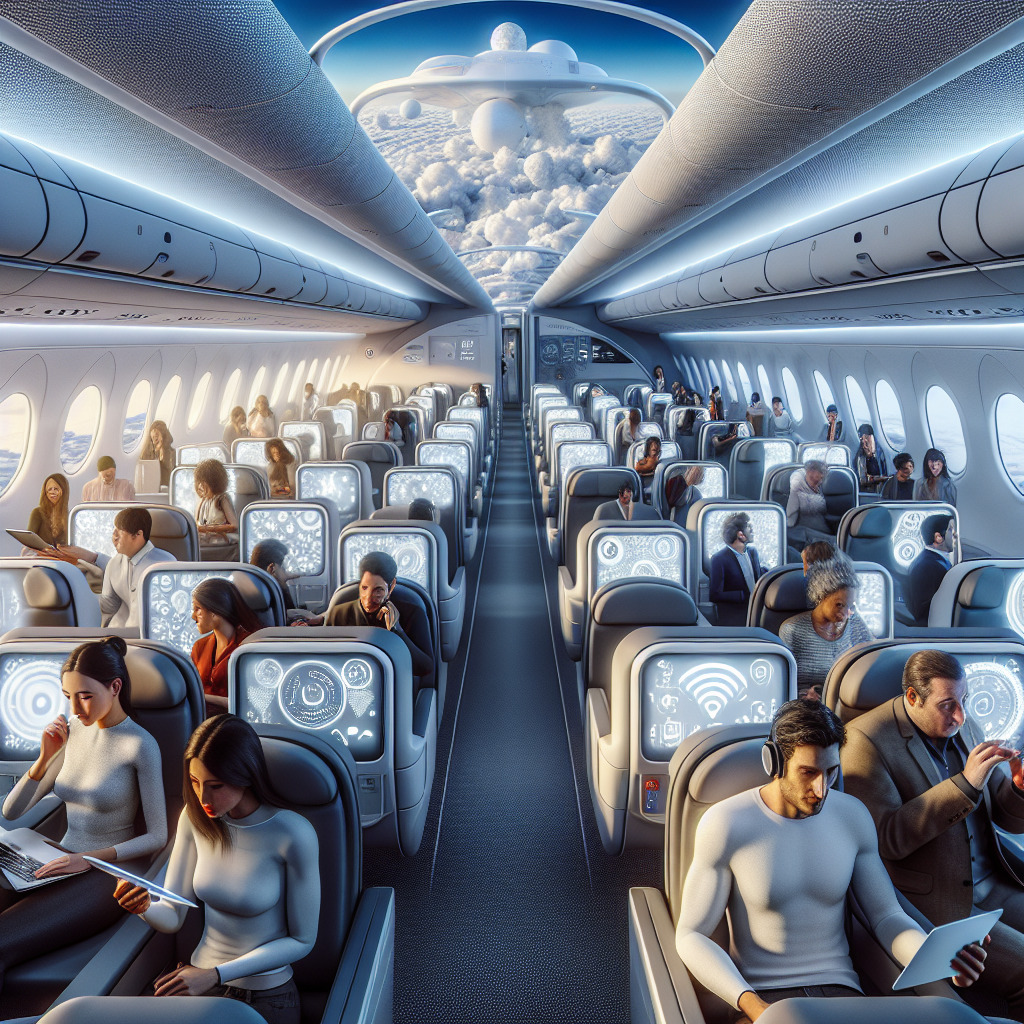Key Takeaways
- Qatar Airways partners with Starlink for in-flight Wi-Fi.
- Plan includes full Boeing 777 fleet upgrade by 2025.
- First Middle Eastern airline with advanced Starlink tech.
- Passengers enjoy high-speed Internet at no extra cost.
- Industry trend towards improved onboard connectivity.
Qatar Airways is setting a new benchmark in the aviation industry by integrating SpaceX’s Starlink Wi-Fi into its fleet, redefining in-flight connectivity. This move not only enhances the digital landscape of air travel but also significantly boosts the passenger experience with uninterrupted, high-speed Internet access. As the airline rolls out this advanced technology, passengers can look forward to a more seamless online experience during their flights.
A Pioneering Launch
As Qatar Airways takes the lead in modernizing airline services, the debut of Starlink Wi-Fi on a Boeing 777 flight from Doha to London captures significant attention. This collaboration marks the first time satellite-based Internet connectivity via Elon Musk’s SpaceX technology has been offered by the airline. The initial success of this launch underlines Qatar Airways’ commitment to enhancing passenger experience and sets a precedent for technological advancement in air travel.
Strategic Implementation Across the Fleet
Qatar Airways has outlined a comprehensive plan to integrate Starlink Wi-Fi across its fleet, focusing initially on the Boeing 777 aircraft and subsequently on the Airbus A350 models. By targeting a complete implementation on all Boeing 777 planes by 2025, and expanding to the A350 by the summer of the same year, the airline aims to ensure that a significant portion of its fleet offers top-tier connectivity. This strategic rollout is not just about implementing new technology, but about transforming the in-flight experience for every traveler.
Elevating Passenger Experience
One of the most notable aspects of this initiative is the approach to passenger experience. Selected routes will provide access to Starlink Internet at no additional cost to the traveler, thereby enhancing travel convenience and satisfaction. This approach underscores Qatar Airways’ commitment to offering premium services and maintaining its reputation as a leading global carrier. By eliminating the cost barriers to high-speed Internet, Qatar Airways is paving the way for a richer, more enjoyable in-flight experience.
Setting a Regional Benchmark
By integrating the Starlink Wi-Fi system, Qatar Airways positions itself as a leader in the Middle East and North Africa (MENA) region for providing advanced in-flight connectivity. This technological adoption not only reinforces the airline’s competitive edge but also sets a regional benchmark for other carriers to follow. As the largest and first carrier in the MENA region to offer such advanced in-flight Internet capabilities, Qatar Airways exemplifies innovation and leadership in the aviation sector.
Following a Global Trend
The aviation industry is witnessing a shift towards enhanced onboard connectivity, with several carriers embracing similar advancements. Airlines such as United Airlines, Hawaiian Airlines, Air France, and Air New Zealand have also partnered with Starlink, signaling a broader trend towards improving in-flight connectivity. This indicates a sector-wide recognition of the importance of reliable Internet services as part of the standard passenger experience.
Looking Forward: Future Prospects
The adoption of Starlink Wi-Fi is not just a milestone for Qatar Airways but also a glimpse into the future of air travel. SpaceX CEO Elon Musk envisions continuous enhancements in Starlink services, which promise even greater benefits for airlines and passengers alike. As these improvements roll out, passengers can anticipate faster speeds, lower latency, and broader connectivity options.
Conclusion
Qatar Airways’ bold move to partner with Starlink for in-flight Wi-Fi is a transformative step in aviation technology. By setting new standards for connectivity, the airline not only elevates passenger experience but also contributes to the rapidly evolving landscape of air travel. As more airlines embrace such technological innovations, the future of flying looks increasingly interconnected, signaling exciting times ahead for travelers around the globe.




